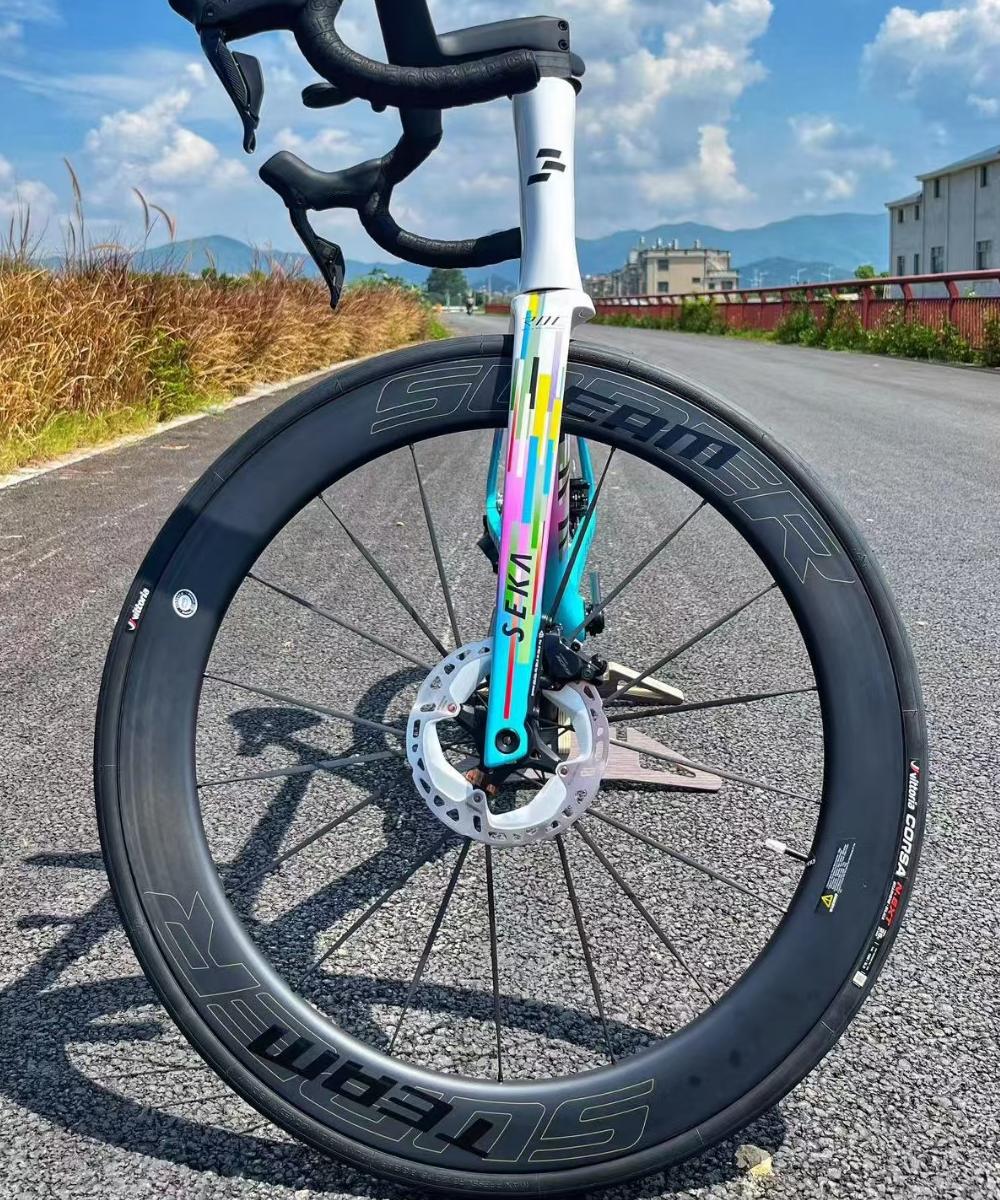Gravel Wheel Maintenance: Cleaning and Inspection Tips for Carbon Rims
Introduction
Gravel riding exposes wheels to dirt, mud, grit, and water more than road cycling. Carbon rims, while lightweight and high-performing, require careful maintenance to maximize longevity and performance. Regular cleaning and inspection help prevent damage, maintain braking efficiency, and detect early signs of wear before serious problems arise.
Cleaning Carbon Gravel Wheels
Rinse Off Loose Dirt
Use a gentle stream of water to remove loose mud and gravel.
Avoid high-pressure hoses directly on bearings or brake surfaces, as this can force water into hubs.
Mild Detergent and Sponge
Apply bike-specific cleaner or mild soap with a soft sponge.
Focus on brake tracks, rims, and spoke areas.
Avoid abrasive brushes that could scratch the carbon surface.
Tire Removal (Optional)
For thorough cleaning, remove tires to access the rim interior and spoke nipples.
This also allows inspection for micro-cracks or resin wear inside the rim bed.
Drying
Wipe rims with a clean microfiber cloth.
Ensure all brake tracks are dry before reassembling, especially on rim-brake carbon wheels.
Inspection Tips
Brake Track / Pad Contact Area
Check for glazing, uneven wear, or scratches.
Rim-specific carbon brake pads may need replacement if glazing occurs.
Rim Bed and Sidewalls
Look for hairline cracks, delamination, or resin discoloration.
Inspect bead seat areas for damage that may affect tire mounting or tubeless seal.
Spokes and Nipples
Ensure spoke tension is even.
Look for loose or corroded nipples that could compromise wheel integrity.
Hubs and Bearings
Spin wheels to check for smooth rotation and listen for unusual noise.
Regularly service hubs according to manufacturer recommendations.
Tubeless System Check
Examine the tire bead, sealant condition, and valve for leaks.
Refresh sealant periodically, especially after rides in muddy or wet conditions.
Preventive Maintenance Practices
Clean After Every Ride: Particularly in wet or muddy conditions, to avoid grit embedding into brake tracks or hub surfaces.
Regular Inspection Intervals: Every 500–800 km or monthly for heavy-use gravel riders.
Protective Measures: Consider rim tape, rim inserts, or tire liners to reduce impact stress and puncture risk.
Storage: Keep wheels in a dry, temperature-stable environment to prevent resin stress or moisture-related issues.
Conclusion
Gravel riding challenges carbon rims with dirt, vibration, and moisture, but consistent cleaning and inspection can significantly extend wheel lifespan. By paying attention to brake tracks, rim beds, spokes, and hubs, riders can catch early signs of wear, maintain braking performance, and ensure their wheels remain safe and reliable. Proactive maintenance keeps carbon rims performing at their best, even in the toughest gravel conditions.




